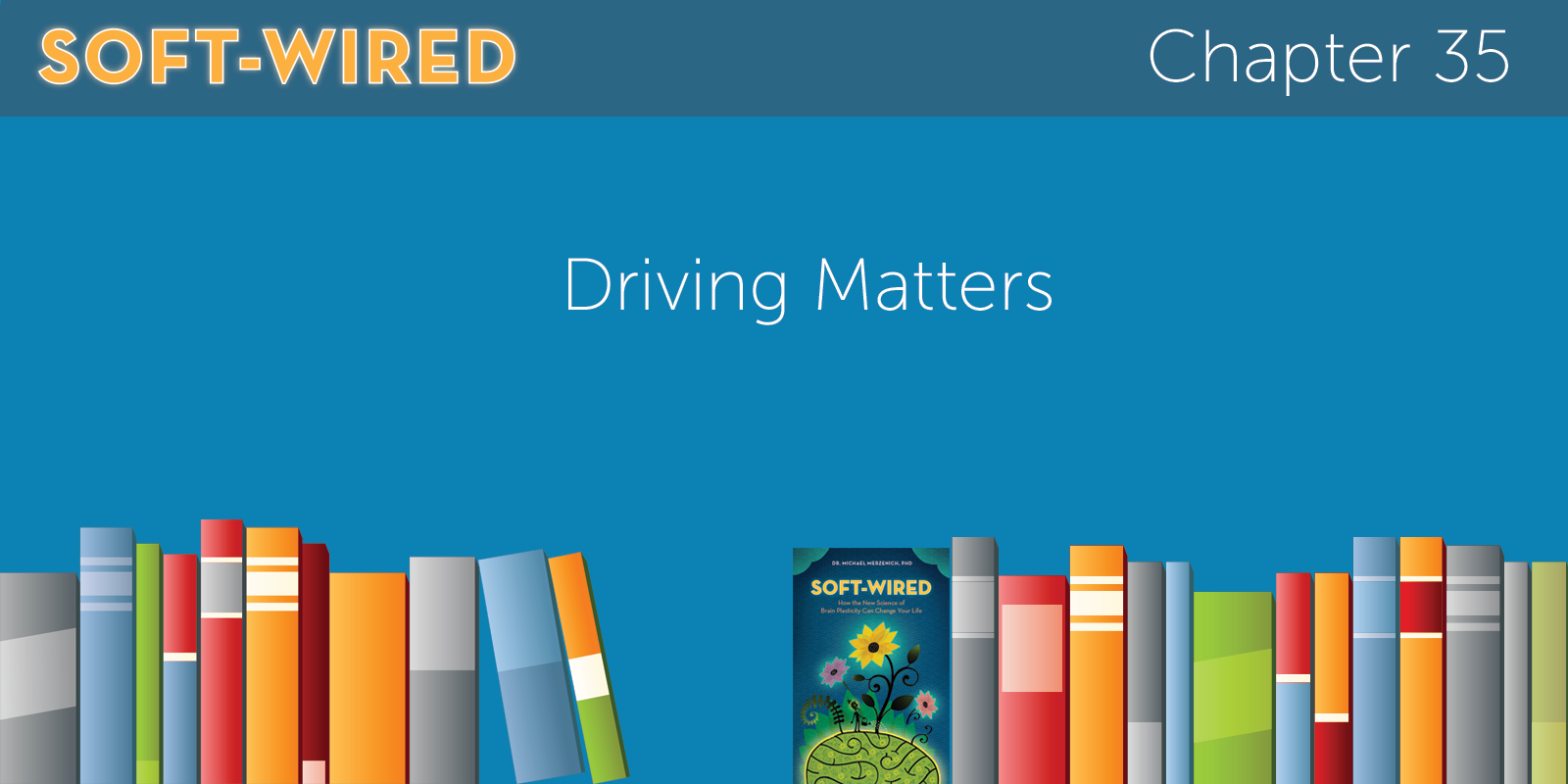Driving Matters
Navigating the Modern World
- Drs. Karlene Ball (University of Alabama at Birmingham), Daniel Roenker (University of Western Kentucky) and Jerri Willis (University of South Florida) first demonstrated the strong relationship between a speed-related divided attention ability in vision (the individual’s “Useful Field of View”, UFOV) and their driving accident rate THEN showed that UFOV was highly trainable, and that training resulted in far safer driving AND enabled older individuals to sustain driving (keep their driver’s licenses; drive more competently, frequently, confidently, far longer in life) and sustain their independence much more effectively. It might be noted that studies controlling for all other factors have shown that loss of your driver’s license or voluntary cessation of driving results in a dramatic increase in the probability of your early demise. See, for example, Edwards JD, Lunsman M, Perkins M, Rebok GW, Roth GL (2009) Driving cessation and health trajectories in older adults. J gerontol A Biol Sci Med Sci 64:1290.For an entry into the several dozen reports relating your high-speed, wide-field vision to safe driving, see Friedman C et al (2013) Association between higher-order visual processing abilities and a history of motor vehicle collision involvement by drivers ages 70 and over. Invest Ophthalmol Vis Sci 54:778; or Ball K, Edwards JD, Ross LA, McGwin G Jr. (2010) J Am Geriatr Soc 58:2107; O’Connor ML, Edwards JD, Wadley VG, Crowe M (2010) Changes in mobility among older adults with psychometrically defined mild cognitive impairment. J Gerontol B Psychol Sci Soc Sci 65:306.For a documentation of the positive impacts of brain training for safe driving, see, for example, Edwards JD, Delahunt PB, Mahncke HW (2009) Cognitive speed of processing training delays driving cessation. J Gerontol A Biol Sci Med Sci 64:1262; Edwards JD, Myers C, Ross LA, Roenker DL, Cissel GM, McLaughlin AM, Ball KK (2009) The longitudinal impact of cognitive speed of processing training on driving mobility. Gerontologist 49:485-94; Roenker DL, Cissel GM, Ball KK, Wadley VG, Edwards JD (2003) Speed of processing and driving simulator training resu.t in improved driving performance. Hum Factors 45:218.We have conducted large, unpublished studies with three major insurance companies to directly document the impacts of our brain training on driving accident rates. In general, outcomes closely parallel those recorded in the studies of Ball, Roenker, Edwards & colleagues reported above, i.e., driver-caused accident rates for over-65-year-old drivers are approximately cut in half.As noted in Chapters 19-22 and 26, our ‘navigation’ abilities are accounted for by the operations of the hippocampus and the cortical areas that feed it — with these areas being especially susceptible to loss and to emergent pathology in older age.For an entry into a number of studies documenting the decline in navigation abilities with age, see Moffat SD, Zonderman AB, Resnick SM (2001) Age differences in spatial memory in a virtual environment navigation task. Neurobiol Aging 22:787.
Fortunately, these functional and physical changes are substantially reversible. See, for example, Lovden M et al (2012) Spatial navigation training protects the hippocampus against age-related changes during early and late adulthood. Neurobiol Aging 33:620; Wenger E et al (2012) Cortical thickness changes following spatial navigation in adulthood and aging. Neuroimage 59:3389.






